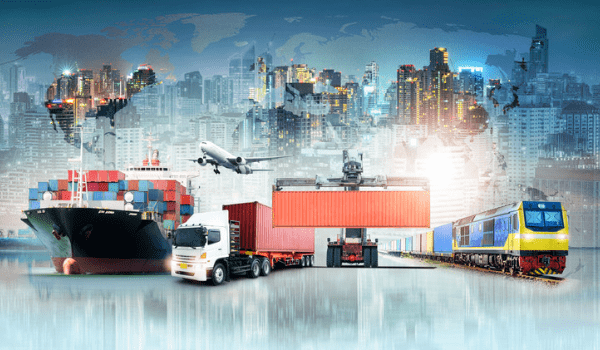Impact of Trump's Trade Policies on Logistics and Transportation

Global logistics and transportation, often considered the lifelines of international trade, are deeply influenced by geopolitical shifts. The prospect of Donald Trump’s return to the presidency brings renewed focus on his trade policies, characterized by renegotiated agreements and protectionist tariffs. These measures, designed to bolster American industries, are expected to send ripples across the logistics and transportation landscape, redefining trade routes, costs, and operations.
Trump’s Trade Policies: An Overview
Trump’s trade agenda, both during his first term and potentially in the future, emphasizes reducing trade deficits, increasing domestic production, and protecting American jobs. Key strategies include imposing tariffs on imports from major trading partners like China, Canada, and Mexico and revisiting multilateral trade agreements such as the USMCA. While aimed at strengthening the U.S. economy, these policies have historically introduced disruptions to global trade logistics.
Impact of Tariffs on Logistics
Tariffs serve as a double-edged sword in international trade. By increasing the cost of imported goods, they incentivize domestic production but also strain logistics networks. Higher tariffs can lead to:
- Increased Costs: Freight rates may rise as companies seek alternative routes to circumvent tariffed goods.
- Customs Delays: Stricter inspections and new documentation requirements extend processing times, disrupting schedules.
- Altered Supply Chains: Businesses may pivot to new suppliers or adjust production locations to mitigate costs.
For instance, during Trump’s first presidency, tariffs on Chinese goods led many U.S. companies to source from Southeast Asia, creating new logistical challenges.
US-China Trade War Revival
The possibility of reigniting the U.S.-China trade war looms large. Historically, this conflict caused significant upheaval in global shipping patterns. Major carriers rerouted their fleets, and businesses scrambled to diversify supply chains. If these tensions resurface, logistics providers will need to navigate higher costs, evolving trade corridors, and fluctuating demand.
Implications for USMCA
Trump’s potential revisions to the USMCA could impact the intricate network of cross-border transportation. Stricter regulatory frameworks and enhanced compliance checks might lead to:
- Prolonged border delays.
- Increased costs for trucking and rail operators.
- Challenges in maintaining seamless supply chain operations between the U.S., Mexico, and Canada.

Global Supply Chain Dynamics
Protectionist policies often encourage nearshoring and reshoring trends, driving companies to move production closer to consumer markets. While this strategy reduces reliance on foreign suppliers, it also reshapes global freight networks. For example, U.S. companies prioritizing domestic production may require expanded trucking services and local warehousing facilities, challenging existing logistics infrastructure.
Port Congestion Challenges
U.S. ports are no strangers to congestion, particularly during periods of policy-induced stockpiling. The imposition of new tariffs could replicate these scenarios, as businesses rush to import goods ahead of deadlines. Key ports like Los Angeles may experience bottlenecks, disrupting supply chains and escalating costs.
Air Freight Trends
As maritime and rail transport face delays, air freight may become a crucial alternative. Although it is faster, air freight comes with higher costs, making it a suitable option mainly for high-value goods. Industries such as electronics and pharmaceuticals may experience an increase in air freight usage to ensure continuity in their supply chains.
Trucking and Rail Sector Impacts
The increased freight volumes due to policy changes could place significant strain on the U.S. trucking and rail industries. The ongoing truck driver shortage worsens this issue, potentially leading to delays and higher operational costs. Additionally, rail networks may require upgrades to handle the increased demand.
Technological Solutions
Businesses are increasingly turning to technology to navigate the complexities of Trump’s trade policies. Blockchain technology provides transparency in customs processes, while predictive analytics facilitate efficient route planning. Additionally, digital platforms that integrate supply chain functions will play a crucial role in maintaining agility and minimizing disruptions.
Conclusion
The potential return of Trump’s trade policies highlights the need for resilience in the logistics and transportation sectors. While these measures aim to strengthen the U.S. economy, they also present challenges that necessitate innovative strategies, adaptability, and technological integration. Businesses that proactively embrace these changes will be better positioned to succeed in an evolving trade environment.
Centrally Located Cold Storage Solutions
Interested in learning about how our cold storage facilities can help your business? Reach out to our team today!

Get in touch with us today to learn more about how Evo Logistics’ climate controlled storage facilities can help your business thrive in the frozen storage logistics industry.
Our team understands the importance of being committed to ensuring the quality of our customer’s product is at its best throughout the shipping process. Our dedicated staff are trained to monitor and operate around the clock 24 hours a day, 365 days a year. With a focus on fast and timely delivery along with GPS tracking, we work to provide consistent satisfaction to our customers.




